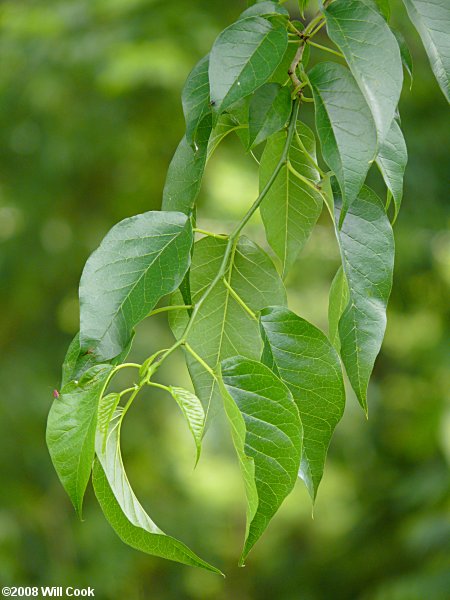
| Osage-Orange is a medium-sized tree native to the south-central US that was formerly often planted for hedgerows and specimen trees. In North Carolina it persists and weakly spreads from cultivation. All these photos are of the same tree, the largest in the state, at the Burwell School in Hillsborough, NC. The leaves are deciduous, alternate, entire, smooth, and shiny dark green above. The name Osage-Orange comes from the tree's use by the Osage Indians (for making bows) and the ball-shaped orange-colored, orange-shaped aggregate fruits. Other common names include Bois-d'arc, Bow-wood, and Hedge-apple. Hillsborough, Orange Co., NC 6/1/08.
|
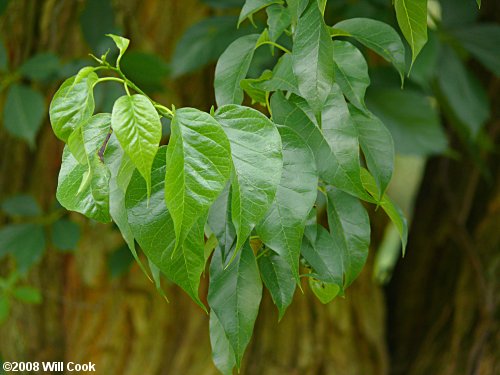
| Hillsborough, Orange Co., NC 6/1/08.
| 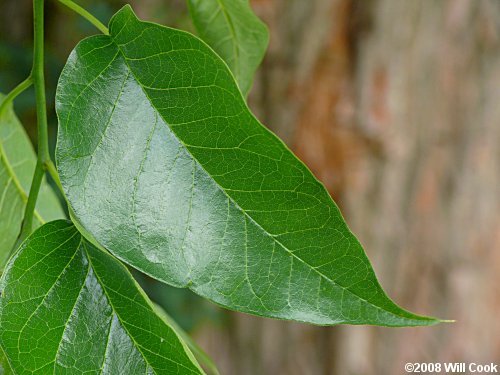
| Hillsborough, Orange Co., NC 6/1/08.
| 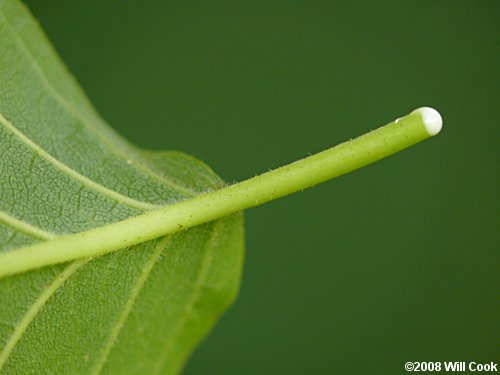
| The petioles exude a milky sap when broken. Hillsborough, Orange Co., NC 6/1/08.
| 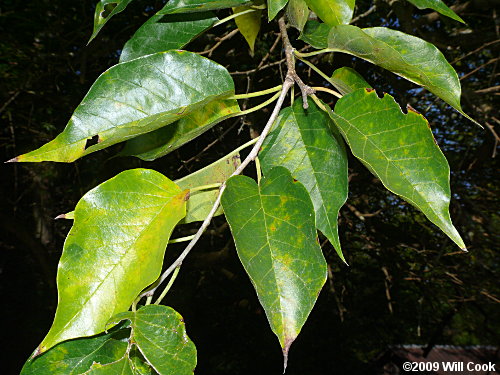
| Durham Co., NC 10/3/09.
| 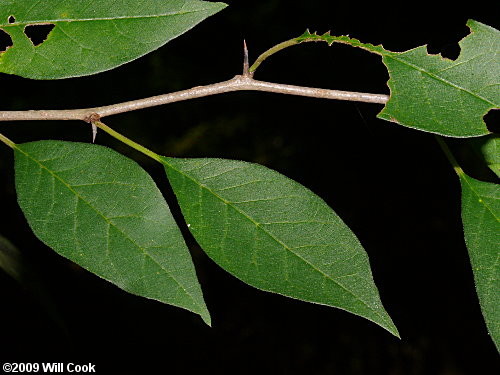
| Durham Co., NC 10/3/09.
| 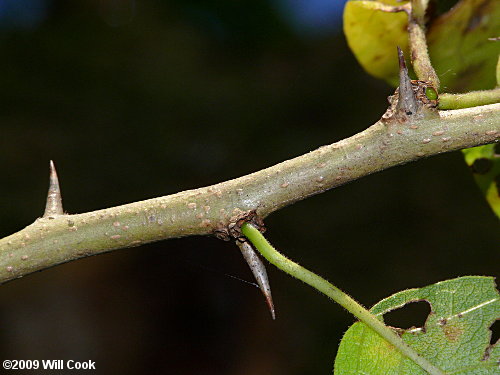
| The twigs may be spiny, with single spines at the bases of the petioles. Durham Co., NC 10/3/09.
| 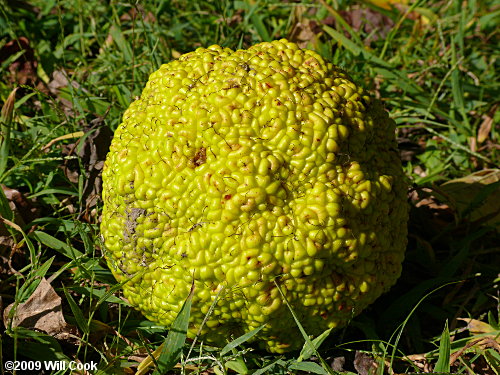
| The fruits are huge (grapefruit-sized) and yellow-green. They smell vaguely citrusy, but are not good to eat. Durham Co., NC 10/3/09.
| 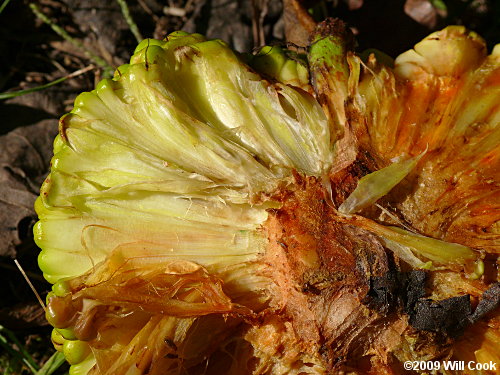
| Section of a fruit ripped open by a squirrel. Durham Co., NC 10/3/09.
| 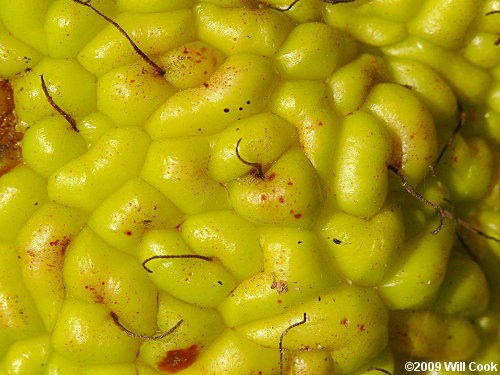
| Close-up of the bizarre skin of the fruit. Osage-Orange is in the mulberry family - you can see the family resemblance. Durham Co., NC 10/3/09.
| 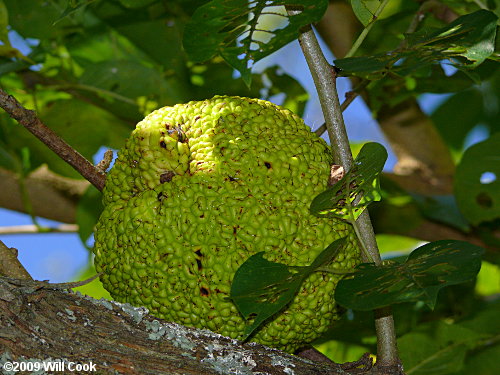
| Durham Co., NC 10/3/09.
| 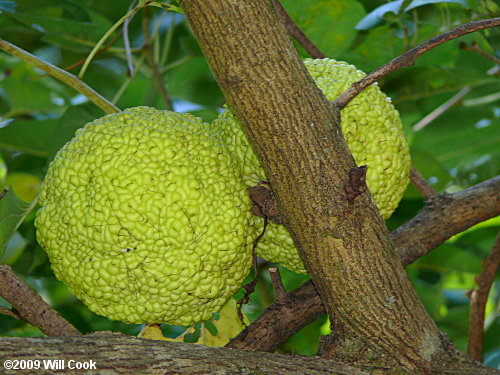
| Durham Co., NC 10/3/09.
| 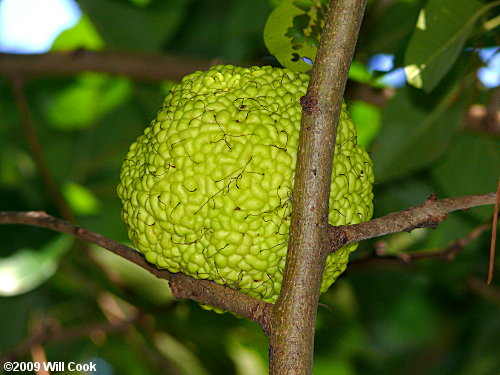
| Durham Co., NC 10/3/09.
| 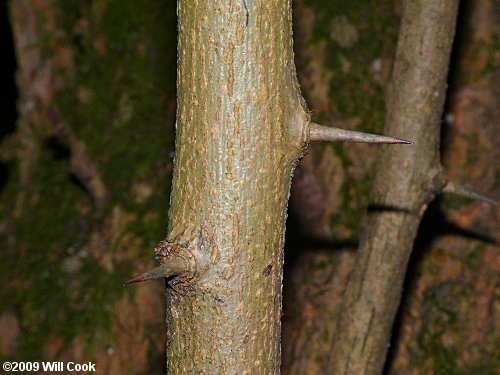
| Bark of a young tree. Durham Co., NC 10/3/09.
| 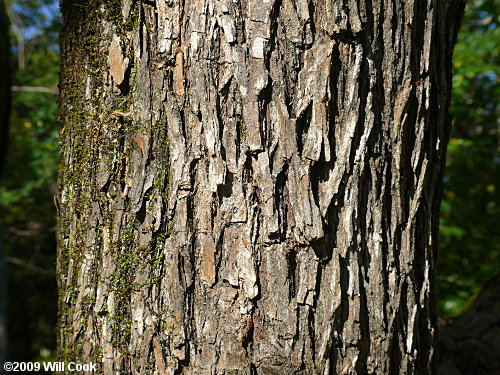
| Bark of a large tree. Durham Co., NC 10/3/09.
| 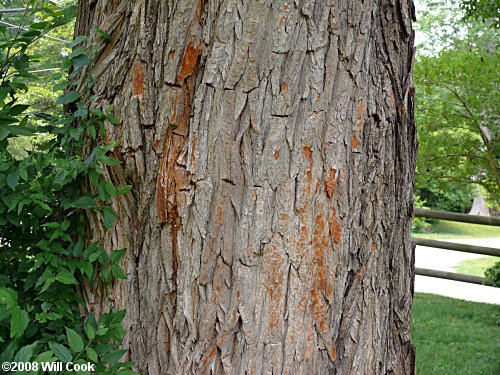
| Bark of a very large tree. Hillsborough, Orange Co., NC 6/1/08.
|
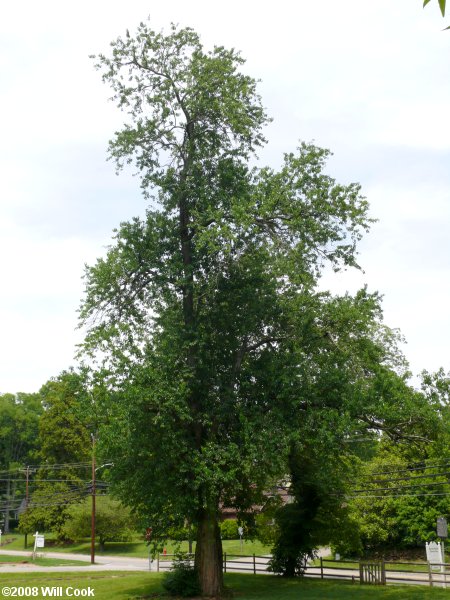
| The state champion tree, measured at 92 feet tall, with a circumference of 127 inches and a spread of 63 feet. Hillsborough, Orange Co., NC 6/1/08.
|
More information:
Bioimages
Great Plains Nature Center
USDA PLANTS database
US Forest Service Silvics Manual
University of Connecticut
Virginia Tech Dendrology
Recommended Tree, Shrub, and Woody Vine Identification Guides
|
|
















